A new way of thinking about health and medicine
By Walter Sorochan HSD, MPH, MSc, BPE, Emeritus Professor San Diego State University
Posted January 8, 2019 Update: August 18, 2023 Disclaimer
This article is a new way of thinking about health, life, medicine, health care system and civilization. The information on the opening page of this website symbolizes the need to understand the need to change our entire lifestyle if we, as a civilization, are to survive. Humans deal with everyday tasks as economists, homemakers, engineers, doctors, teachers, students, actors, and others trying to sustain a life worth living. Most never reach optimal wellbeing or their full potential and are fortunate to somehow survive a less full life.
Health has been used interchangeably with wellness and wellbeing. Melvin J. Witner in "Evolution of Wellness," from book by Granello Wellness Counseling, 2013, and Jana Stará and Michal Charvát summarize wellness, its origins and theories. But they overlook identifying the factors of health and wellness that determine survival. It is worth pointing out that many health experts talk about health determiners but neglect to state precise determiners of survival.
The most popular theory of health is the WHO definition of health in 1948.
Bill Hettler, former physician at the University of Wisconsin – Stevens Point, created the first faculty wellness program and introduced the concept of wellness into the academic field. His theory is based on six dimensions or characteristics of wellness: emotional, occupational, physical, social, intellectual, and spiritual. Hettler's theory of wellness has not been tested.
The most important and overlooked survival need is sunlight. It was the sun millions of years ago that initially provided the energy and spark to evolve plant-bacteria, known as blue-green algae or spirulina. The illustrations below show the slow evolutionary processes that evolved homo sapiens:
 |
 |
 |
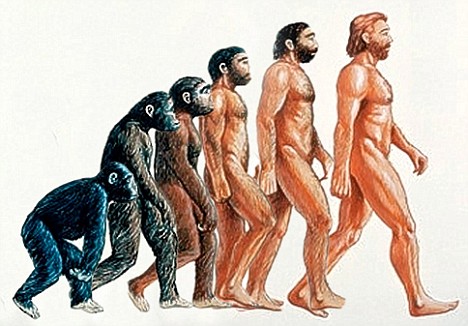 |
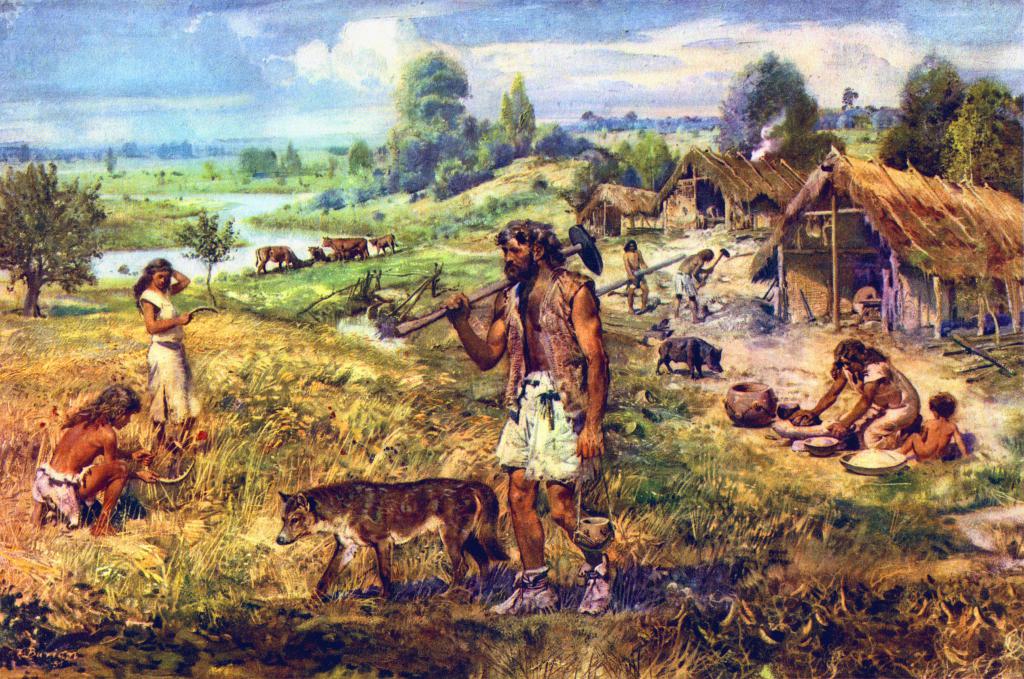 |
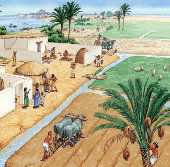 |
 |
| sun | cyanobacteria | plants-lung fish | evolution | ancient man | Mesepotamia | Roman senate |
This form of hybrid algae organism used sunshine to make its own food and be able to survive. Eventually, spirulina gave rise to fish with lungs and plants using sunlight as energy to stimulate the process of photosynthesis to form plant food. Plants, in turn, provided the food for animals and humans. Without essential sunshine, there would be no plants, no food and species survival.
Health and wellbeing are basically viewed as having the same meaning. Health was a term used more generally before 1980 to express freedom from disease or infection. But with the advancement of nano-technology and medical science, we now have a much more advanced understanding of how the body works and how complex wellbeing can be. Although we now have the basis for a new understanding of wellness, humans have become obsessed with greed, power and money instead of the welfare of the state and people. Survival of civilization is in jeopardy.
Priority for health: Life started with the sun. Health got meaning as mankind found ways to survive over millions of years. It started when the solar system and earth were formed. Such survival is briefly summarized in the article image below:

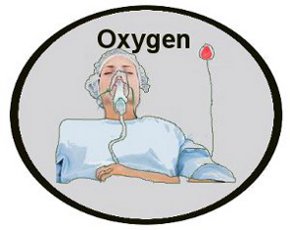
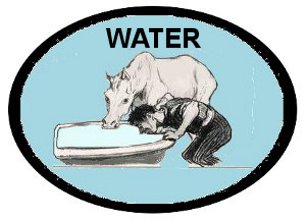
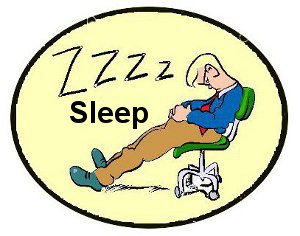
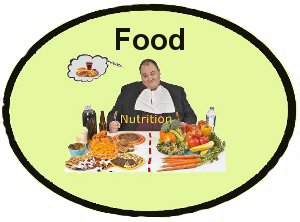


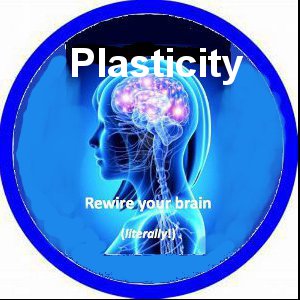
click on image for more information.
Ancient civilizations were aware that their survival was somehow linked to the sun's energy, but lacking the science to understand the sun and earth relationship. They were aware that the sun was essential to their survival and gave the sun Godlike, mystic powers. The Roman empire had six kings, wars and many disagreements before the idea of king rule was abandoned for a senate government.
Forward to today: The sun is the primary survival need although most persons do not perceive the sun as an essential need. Scientists recognize secondary essential survival needs as oxygen from clean air, water, sleep and food.
A quick comment about how these four affect people in the world today. These four needs are taken for granted in most parts of the world. We seldom think about needing oxygen to survive unless one lives in air polluted Asian countries like China and India. Water is a major survival need in desert countries and where the water supply is polluted. Going without sleep for one day causes confusion, loss of alertness and irritability. Although food as a carbohydrate source of energy may help prevent starvation, it is the lack of quality nutrients that is contributing to many chronic diseases today. Although people living in many advanced nations have food, many are nutrient malnourished. This is a new form of survival concern that is related to chronic diseases caused by eating bad food. People survive with food but incubate chronic diseases.
Third level survival needs [ socialization, values and morality] evolved as mankind banded together socially for protection; eventually realizing the need to control its members with values and morality in order to continue surviving [as ancient Romans did]. During these periods of survival episodes, the human brain evolved as an advanced form of survival such as thinking and solving problems. Today, the brain needs excitement from new experiences and adventures. Advancements in high nano-technology since 2000 have allowed scientists to learn about this mystic power as plasticity. Plasticity is an advanced form of fine tuned and higher level survival.
Although evolution has advanced health through the ages, it has been improvement in sanitation, water purification and better diet, that since 1900, have provided humans with better health and opportunities for better living and longer life. Such advancements provided us with life needs for survival. Although not everyone is in good health today, all persons are able to survive in some fashion.
The human body has been programmed to sustain life and this is what we refer to as survival. The degree or limit of survival is based on health or how well one is. Classic example of those surviving are obese persons. They survive with a chronic disease, function in society, but do not attain good or optimal wellbeing.
Living with a disease is not being on the same health level as someone without a disease. There is a biblical saying - "How great thou art!" - but to be great you need optimal wellness. Otherwise, if you are sick or harboring a disease, you are functioning at a survival wellness level. At this sickness level, you do less and live less. Just living a subsistence lifestyle does not 'cut it'. One needs to maximize the inner potential for optimal wellbeing and excellence!
You should be aware that you can survive a "lingering" or "survival" life for many months and years with inadequate amounts of nutrients, sunshine, and physical activity. [3] Your body has a great ability to compensate when nutrients are in short supply. It does so by your natural body maintenance - healing process. You probably will have signs and symptoms of poor health but not pay much attention to these signs. Such signs and symptoms can persist for months and years, slowly incubating a dysfunction or illness that, if not healed, eventuates into a chronic disease. You function at a lower survival level of wellness while all these bodily happenings are taking place. As a somewhat handicapped person, you live less, do less and not realize it!
Many persons in good health will probably say that they do not need to practice prevention. They may be feeling good about some of their bad habits, like eating sugary pastries, hamburgers, and French fries, but unaware that their bad habits may also be incubating a disorder or disease. Such a sweet good feeling is deceptive.
Even when you are sick or suffering from a disease, your silent body maintenance and healing system is compensating to keep you alive as well as it can. The mind-brain appears to have a built-in protective morality. It appears to have moral sensitivity like a built-in moral guidance system. It senses to do the right thing for the body it is in, protecting it and extending biological life as well as its own brain life. The brain wants to survive; it has no interest in money, power or politics.
The guidance system is biologically programmed to give top priority to keep the physical body alive. For example, the heart can continue to live [survive] outside the body as long as it receives oxygen and nutrients.
The body has the ability to heal itself if given the adequate nutrients. [2] When one or two of your body systems sputter or a nutrient is in short supply, your body equilibrium [homeostasis] is disrupted or broken, your immune level drops and you can quickly succumb to illnesses and diseases.
Most persons do not pay attention to the signals, or symptoms, that the sick body is sending. Your body sends signals of not feeling good and feeling sick! Prevention requires being able to recognize these as crisis signals. Recognizing the causative root of the problem, becoming aware of the need for change, and how to do it, can be a wake up call. Good body information provides motivation for behavior and lifestyle change.
So what is optimal wellness?
The preceding information about how the human body works is a brief example of how the body reacts and changes take place. These changes are referred to as states or levels of wellness. Wellness and health are used interchangeably to describe and define the condition of the human body. Such definitions have not really changed that much from the World Health Organization [WHO] definition of health in 1948. [4] Most definitions of health and wellness focus on the traditional definition that is difficult to measure, and simply ignores the real changes taking place in the body each day. Indeed, it can be theorized that the current health care and medical system today is based on the outdated WHO theory of health. New research information since 2000 has provided many important medical and biological advancements that bring a change to our thinking about what health really is, how we can achieve optimal wellbeing and how we can foster a positive lifestyle.
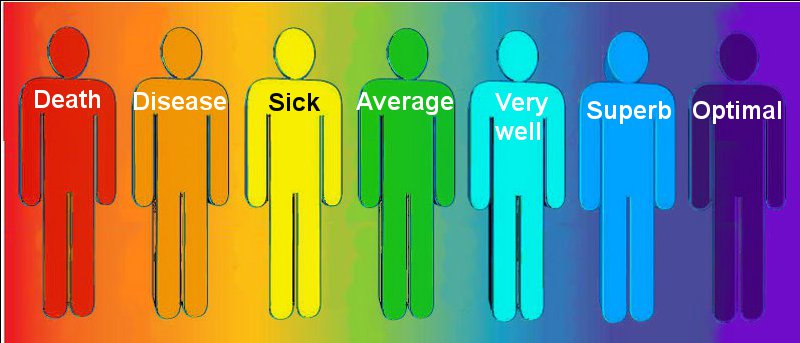 Delbert Dunn's Levels of Wellness [illustrated on left by Sorochan] is preferred to WHO definition of health because levels of wellness places health status on a continuum from optimal wellness to disease crisis. [3]
The continuum is portrayed in the illustration on the left side by the changing background color. A person in superb health functions differently from someone who is in a normal fitness or sick or diseased state. The continuum is based on different levels of functionality that are difficult to identify and for the average person to relate to.
Delbert Dunn's Levels of Wellness [illustrated on left by Sorochan] is preferred to WHO definition of health because levels of wellness places health status on a continuum from optimal wellness to disease crisis. [3]
The continuum is portrayed in the illustration on the left side by the changing background color. A person in superb health functions differently from someone who is in a normal fitness or sick or diseased state. The continuum is based on different levels of functionality that are difficult to identify and for the average person to relate to.
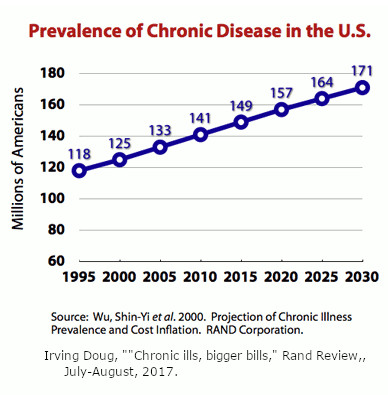 Levels
of wellness are linked to current health problems.
Our health problems, like overweight and obesity, diabetes, arthritis, and cancer, have not improved
with Western medicine. [refer to the graphic on the right] Likewise, there are many related
health practices that have not changed, such as inadequate recommended daily allowances, nutrient-mineral ratio balancing, lack of research about nutritional
co-factors, lack of medical recognition that food is the best medicine and medicine still being practiced the old fashioned way. [7] As a result, the
health status of the general population [observe graph on right side] has gotten worse since 1995, not better! [8]
We have a world chronic disease crisis.
Levels
of wellness are linked to current health problems.
Our health problems, like overweight and obesity, diabetes, arthritis, and cancer, have not improved
with Western medicine. [refer to the graphic on the right] Likewise, there are many related
health practices that have not changed, such as inadequate recommended daily allowances, nutrient-mineral ratio balancing, lack of research about nutritional
co-factors, lack of medical recognition that food is the best medicine and medicine still being practiced the old fashioned way. [7] As a result, the
health status of the general population [observe graph on right side] has gotten worse since 1995, not better! [8]
We have a world chronic disease crisis.
It is not just that the health care system in United States is failing; it is not working in most other countries either. The medical model of symptom, diagnosis and treatment [through surgery or medication] has been, as Renton [9] points out, effective in dealing with "crisis emergency battlefield" injuries but not very effective in dealing with chronic diseases that plague our society. We have a medical symptoms treatment model and not a disease prevention model.
The new medical and biological advancements include methylation; epigenetics; recognizing the impact colon bacteria have on immunity, diseases and health; [5] [6] and liposomal encapsulation delivering medication and nutrients to target sites thereby speeding up healing and biophotons and nano light affects on the body [10]. These few examples illustrate that information about the human body has progressed faster than it is being adopted or understood by the general population, politicians and medical experts.
The accepted WHO model of health, as practiced by medicine, needs to change in order for the medical health care system to deal with the chronic disease crisis. Giving credibility to simplifying the concept of health is Dr. Frank Lipman [7] who points out that:
"The problem is that although most of us are not permanently in a health “crisis”, this crisis [medical] care model is being used to treat every health problem or symptom - as if it is the only health care model we have. Most of us are not sick enough to be in hospital, and by far the majority of people who visit their doctor, do so for ongoing chronic problems like diabetes, heart disease and obesity - or less-defined disorders like joint pains, back pains, fatigue and headaches."
One way to improve the approach to better health care is to simplify the meaning of health for the general population. This author has simplified the levels of wellness into three major levels: optimal wellness, survival wellness and crisis wellness. This approach replaces the medical perception of health as physiological benchmark definitions. Instead wellbeing is simplified so that common folk can relate to and understand health as it works in their everyday life.
Norman Sartorius, in his 2006 article, "The Meanings of Health and its Promotion," Croatian Medical Journal, Recorded in National Library of Medicine, points out that: "the step forward that could have been taken in the WHO conceptualization of health as a dimension of existence which can co-exist with the presence of a disease or impairment was not taken. Today, three types of WHO definition of health seem to be possible and are used. The first is that health is the absence of any disease or impairment. The second is that health is a state that allows the individual to adequately cope with all demands of daily life (implying also the absence of disease and impairment). The third definition states that health is a state of balance, an equilibrium that an individual has established within himself and between himself and his social and physical environment." Sartorius argues that the ambiguous WHO definition of health, is doomed to failure when the individual relies on his own health promotion efforts without the community and national government support. [4]
Health simplified: Sartorius' noted flaw with health promotion gives serious consideration to Dunn's continuum wellness levels which are simplified into three levels of wellness. These levels depend on the degree of freedom from disease, the severity of infection, disability and stages of the disease:
- Optimal wellness or perfect health is being free of most or all illness, disability and disease, which may be a rarity. Chances are many persons harbor a single disorder or illness for a short period of time such as the flu', healing it and some time later becoming ill with another illness. They may vacillate for short periods from wellbeing to feeling sick but not suffering from a chronic disease.
- Survival wellness is when the body slides to incubating a disorder or disease and would be classified as in a survival mode of wellness. Most persons vacillate at this level, probably harboring at least one body health problem, often incubate a second disorder or disease and not be aware of it. Of course, this would also depend on one's physical fitness, body weight, diet and so on. Still functioning but with less gusto, vigor, doing less and living less. For example, when more than 50 percent of the population is chronically obese and overweight, then such persons would be classified in a survival wellness mode.
- Crisis wellness is the lowest level of wellbeing. An example would be a person bed-ridden or disabled with a disease, hanging on to life. Barely surviving but not really functioning.
This is a realistic common sense way of understanding health and wellbeing that is based on everyday living. Live, exist or almost dying!
The basis for simplifying the traditional models of health into three levels of wellness classification needs further explanation:
Survival-wellness: [3] What happens in survival wellbeing? An interesting, as yet unexplained phenomenon of the human machine, is that the human body is able to adapt in a mysterious way like homeostasis, with no present signs or symptoms of mineral or vitamin imbalance resulting in a disorder. The adaptation utilizes amino acids, vitamins and minerals to fill in the missing information-healing gaps. And probably borrowing from Peter to pay Paul, as robbing bones for calcium or/and magnesium! Such adaptation will, in time, result in failed body systems. A person may go through his/her entire life nutritionally deficient or unbalanced and not know it while socializing, enjoying physical, mental and emotional activities. During this seemingly well time, depending on the severity of lack of nutritional balance, one may never become severely ill, while other factors are present that contribute to incubating diseases; such as emotional stresses, environmental toxins, nutrient deficiencies, processed foods, and so on and the body balancing these out with overall low level survival wellness. The classic example of the body's ability to survive, for several months with a major deficiency, is that of sailors on ancient sailing ships subsisting on a diet deficient in fresh fruits and vegetables [vitamin C], that gradually caused scurvy symptoms in sailors before vitamin C was discovered. Another is the many working in homes and lacking sunshine and vitamin D. Today, many suffer from deficient nutrition similar to that of sailors long ago and not realize it, as the human body is a marvelous machine that compensates for man's indiscretions; and hangs on to survive.
This new perception of uncertain and often hidden survival-health is very different from all the establishment theories [4] stating that health is a balance of physical, mental, emotional, spiritual and social wellbeing and the absence of illness or disease. [4] There is no balance and most persons harbor and incubate disorders and diseases! These general theories overlooked the precision and delicate balance of nutrient fine tuning or nutrient balancing [3], that, in turn, could result in optimal wellbeing or, if deficient, incubate disease states. It is safe to say that if there are no visible signs of disease, that most persons and medical doctors would assume such a person to be healthy. However, in real life, the body of a person appearing to be in good health and functioning, may not necessarily be well; the degree of wellbeing is compensated, hidden and medically undiagnosed.
It would be remiss not to mention the importance of biophotons and the impact photon light can have on one's DNA, body health and life. The connection between survival and the impact of biophotons is self explanatory if one is acquainted with biophotons. [10]
But .... this is not the end of the health-survival story. For plasticity [11] is the new enhancer to survival wellness. It extends the opportunities for optimal and perfect wellbeing. When humans give the brain the challenges that excite it, then human evolution progresses to a still higher level of functional living. It is more than living longer, with better wellbeing. The brain can explore new dimensions like mental telepathy, spiritualism and all those phenomena that we do not as yet understand; although biophotons do provide information on this issue.
At stake is more than just personal survival. It is survival of American democracy as a civilization. Our orthobiosis, or moral, economic, medical and political way of life is eroding and failing us. Climate change, political dysfunction and chronic diseases are just three symptoms of imminent collapse of a civilization. As a nation, we are not surviving very well.
References:
1 The Anstendig Institute, "The body as machine," 1982. Anstendig Institute: Body as a machine 1982
2 Wilson Lawrence, "The balance concept in healing," January 2016. Wilson: Balanced healing 2016
3 Sorochan Walter, "Nutrient balancing -new theory of well-being," Freegrab.net, November 01, 2016. Sorochan: Nutrient-health theory
4 Sartorius Norman, The Meanings of Health and its Promotion, Croat Med J. 2006 Aug; 47(4): 662–664. Sartorius: Meaning of health 2006
5 Bork Peer, "Bacterial balance that keeps us healthy," Biology & Nature, March 4, 2010. Bork: Bacteria & human health 2010
6 Sorochan Walter, " The Immune - Digestive System Connection," Freegrab.net, January 29, 2013. Sorochan: Immune-digestive system 2013
7 Lipman Frank, "Changing Our Disease Care System To A Health Care System," The Huffington Post, November 17, 2011. Lipman: changing health care system 2011
8 MPKB, "Incidence and prevalence of chronic disease," The Marshall Protocol Knowledge Base. MPKB: Prevalence of chronic disease
9 Renton Lola, "The pitfalls of modern medicine: what you need to know," Igennus Healthy Care Nutrition, January 6, 2015. Renton: Pifalls of modern medicine 2015
10 Sorochan Walter, "Biophotons, light, human body, disease and health," Freegrab,net, May 27, 2019. Sorochan: Biophotons & health
11 Sorochan Walter, "Mental-Mind-Brain - How you become who and what you are," Freegrab.net, October 20, 2018. Sorochan: Plasticity
12 Sorochan Walter, "Basic essential survival body needs," Freegrab.net, December 18, 2018. Sorochan: Basic essential survival body needs 2018
Hettler Bill, "The Six Dimensions of Wellness Model,"1976. Hettler: Wellness model 1976
Blount Ashley J., Dalena L.Dillman Taylor and Glenn W. Lambie, "Wellness in the Helping Professions: Historical Overview, Wellness Models, and Current Trends," Journal of Wellness, September 24, 2020 Vol 2. Blount: Wellness review, models & trends 2020
Witner J. Melvin, "Evolution of Wellness," From book by Granello Wellness Counseling, 2013. Witmer: Evolution of Wellness
Granello Paul F. Wellness Counseling, 2013.
xxxxxxxxxxxxxxxxxxxxxxxxxxxxxxxxxxxxxxxxxxxxxxxxxxxx
Rejeski1 W. Jack and Jason Fanning, "Models and theories of health behavior and clinical interventions in aging: a contemporary, integrative approach," Clin Interv Aging, National Library of Medicine, May 30 2019; 14: 1007–1019. Rejeskil 2019: Health behavior model
Short Susan E., and Stefanie Mollborn, "Social Determinants and Health Behaviors: Conceptual Frames and Empirical Advances," Curr Opin Psychol., National Library of Medicine, October, 2015, 5: 78–84. Short: Social health behaviors 2015
Fried Eiko I., "Theories and Models: What They Are, What They Are for, and What They Are About," Published online, January 07, 2021, pages 336-344. Fried: Theories of models 2021.
Simpson Vicki, "Models and Theories to Support Health Behavior Intervention and Program Planning," Perdue Extension, Health and Human Sciences, March 2015 Simpson: Models & theories to support health behabior & planning 2015
Dunn, H. L. (1961). High-level wellness. Arlington, VA: R. W. Beatty.
Campbell, Leah, "What is an invisible illness?" VerywellMind, June 10, 2021. Campbell: What is invisible illness? 2021